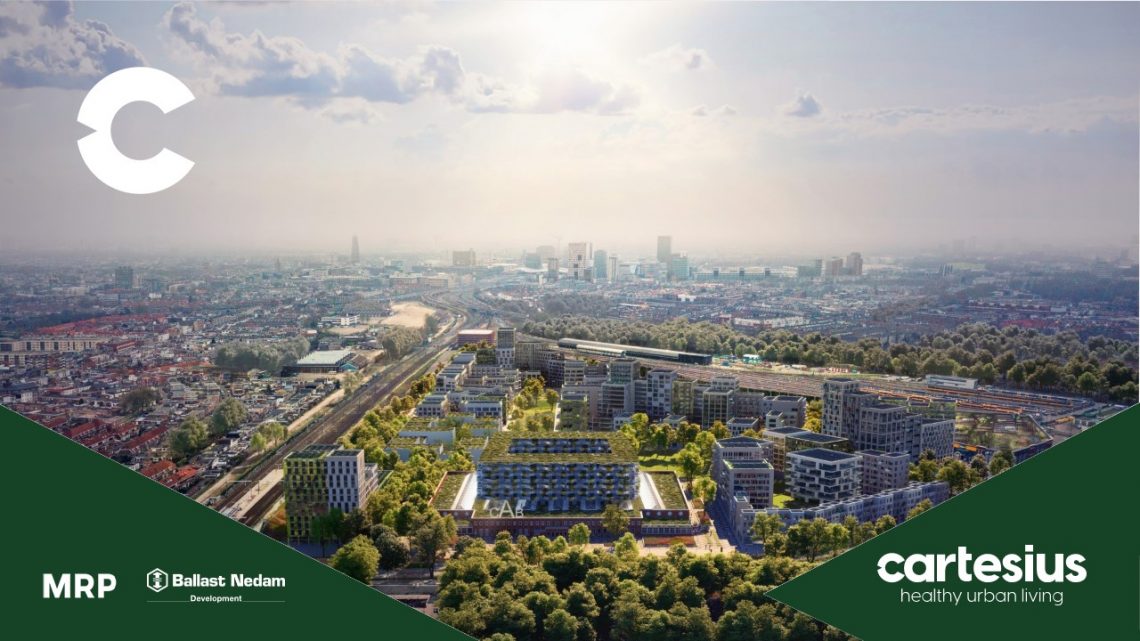HPP blog | Key drivers for future-proof living environments
Blogs, General news

Architect I Developer at MRP Development

The need to design for the challenges of tomorrow is not only a necessity but also an opportunity. An opportunity to create future-proof living environments where people can live longer and happier.
The challenges facing the development and construction sector in the coming years are incredibly large. Just think of the footprint of this industry, which is still far too high. The sector appears to be responsible for almost 40 per cent of total global CO2 emissions. In addition, there are challenges such as housing shortage, urbanisation, climate adaptation, nitrogen problems, stricter laws and regulations and rising construction prices. At the same time, many innovations such as 3D printing of building materials, modular building systems and data-driven design software are changing the way we design and build. When these innovations are combined with the challenges within the sector, nature-based solutions such as green roofs, green facades and urban forests emerge that not only increase climate resilience but also allow us as humans to live longer and happier lives.
Sustainable and healthy city district Cartesius
In the sustainable and healthy city district Cartesius (developed by MRP and Ballast Nedam Development) in Utrecht, more than 2,800 homes will be built in which the sustainability of the built environment goes hand in hand with the well-being of people. The plan is based on the scientific theory about places in the world where people live healthily and happily for longer, the so-called blue zones. The lessons that science has learned from this are translated into eight themes that are applied in the development of Cartesius. The themes deal on the one hand with the physical environment (environment, biodiversity, mobility and circularity) and on the other hand with human behaviour (sense of purpose and relaxation, exercise, healthy food and community). In fact, 20% of how long we live is determined by our genes and no less than 80% is determined by our lifestyle and the choices we make every day.
When innovations are combined with the challenges within the sector, nature-based solutions such as green roofs, green facades and urban forests emerge.
A cohesive community
The houses in Cartesius will all be situated around a large central park. The central park is car-free with ample space for cyclists and walkers. The park is crucial for the stimulation and realisation of a cohesive community in which people live and work, exercise, meet each other, eat healthily and pay attention to sense-making and relaxation. In addition to the residential programme, various facilities will be provided, such as a primary school, a sports hall, a supermarket with an organic and healthy range of products, and various catering establishments.
House of the community
The eye-catcher and the epicentre of the neighbourhood will be the monumental CAB. The building, which has housed the NS Central Auto Repair Company since 1949, will be a real meeting place, a home for the neighbourhood. It is an accessible place where there is something for everyone and where you can learn more about Cartesius. There is also close cooperation with four major universities to stimulate innovation and education around the 8 themes of Cartesius. The result is a future-proof living environment where residents can live healthily and happily for longer and have less impact on the environment.
Future-proof living environments
Cartesius shows what the key drivers are for the realisation of future-proof living environments that try to make a positive impact on both the planet and the quality of life of people. First of all, it is education. How do people want to live and work? How can we reduce our impact on the environment and accelerate the energy transition? Through awareness and a better understanding of the challenges of the future, we can make better plans. Secondly, it is important to focus on innovation. By looking for new building materials, new building methods and new forms of mobility, the impact of this sector can be reduced. In this way, healthy and sustainable mobility will become a matter of course in Cartesius. New forms of mobility will reduce car use. Instead, there will be partial mobility, public transport and good cycling and walking connections.
The high ambition of sustainable neighbourhoods can only be realised if there is close cooperation between the various stakeholders right from the start of projects
Finally, the high ambition of sustainable neighbourhoods can only be realised if there is close cooperation between the various stakeholders right from the start of projects. The complexity of the task of creating future-proof living environments requires an integrated approach from the very first moment. The joint agenda of planners, architects and developers have never been clearer. Together, we should not look at all the problems, but rather at the opportunities.
Cartesius is a fine example of sustainable area development. Want to know more? On May 11, we will discuss the ingredients of sustainable area development, where MRP will elaborate on the development of Cartesius and VolkerWessels will present the sustainable steps in the project RijswijkBuiten.